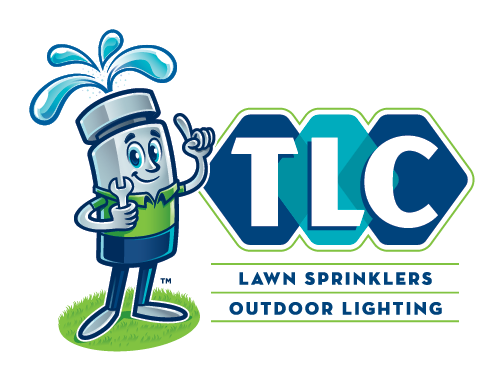Research suggests more than 75% of residential lawns are compacted… this is where the soil has become increasingly compressed, reducing the amount of oxygen in the soil (or its access to the soil), and impeding the flow of necessary nutrients to the grass roots. Eventually a compacted lawn will thin, until ultimately, the soil can’t support any turf growth at all.
And while there may not be any visible symptoms of insect or disease activity, early warning signs include your lawn may seem a bit off-color, thin in spots, and may show signs of stress during high temperature periods. Lawns like this typically haven’t been aerated in several years… if ever.
Core Aeration removes small, tubular-shaped cores of soil, giving air, moisture and fertilizer free access to the root system. Aeration pulls plugs of soil one-to-two inches long from the ground, leaving them on the lawn surface where they’ll gradually break down and decompose.
Soil surrounding the cut holes and the plugs left behind will collapse and fill in the holes. As nature breaks up the cores, the soil filters back into the turf and supports the microbial decomposition of the remaining thatch. Increased air and water in the coring holes also helps decompose the thatch while promoting deeper, healthier root growth.
And Core Aeration can provide a good boost to a marginal lawn and can result in an almost magical transformation for the rest.
Why Core Aeration should be part of your annual lawn care program…
It Helps Resolve Issues with Compacted Soil – Compacted soil can cause water pooling, insufficient oxygen, nutrients and microbial activity at the grass roots. Core Aeration is the best way to deal with compacted topsoil, much like tilling your garden to get ready for planting and a new growing season.
It Breaks Up the Thatch Layer – Every lawn has a thatch layer that – if allowed to get too thick and dense – will prevent water, oxygen and nutrients (both natural and applied fertilizer) from reaching the roots. Because annual core aeration breaks up that thatch barrier, and the soil cores bring health-promoting micro-organisms to the surface, speeding up thatch decomposition… it virtually eliminates this problem.
It Provides Your Lawn with Free Top Dressing – Core aeration leaves thousands of tube-shaped soil cores laying on the surface of your lawn… which essentially gives your lawn a top dressing. These cores help preserve moisture in your turf until they eventually break down during subsequent rainfalls… dissolving back into your lawn.
It Gets More Oxygen to Your Soil and Grass Roots – Promoting steady, on-going healthy, new lawn shoots each year will keep your lawn vibrant and resistant to harmful weeds and insects. But, these new shoots will need growing room… and the myriad of tubular holes created by core aeration provide the perfect, new-growth environment.
It Helps Improve Fertilizer Effectiveness – Because core aeration gives fertilizer better access and improves effectiveness at the grass roots… as well as lawn growth and health… you’ll get a much greater return on your fertilizer investment if you have your lawn core aerated in both the Spring and Fall.
It Helps Protect Your Lawn in Dry Times – Compacted soils result in shallow root systems. Because core aeration promotes deeper, stronger root growth, it’ll give your lawn greater drought tolerance during the driest summer days.
You’ll Use Less Water on Your Lawn – Thatch-bound, compacted lawns won’t absorb water effectively, and because much of the water you apply will simply run off, you lawn won’t get sufficient moisture and nutrients, no matter how much you water them. Aeration gets water to the roots, and largely eliminates run-off… which reduce your water costs.
It Makes Your Lawn More Insect Resistant – Thatch build-up gives insects a perfect growing environment. Because core aeration cuts thousands of holes into the thatch layer, it disturbs that ideal insect environment, reducing infestation.
It Makes Your Lawn More Weed Resistant – Core aeration allows water, oxygen and nutrients to reach the grass roots which promotes new growth. Since new growth makes your lawn denser & healthier, it tends to crowd out weeds.
It improves the Curb Appeal & Value of Your Home – It’s said your home’s curb appeal, and more specifically the look and health of your lawn, will say much about how you care for rest of your home and property. A home with a thick, lush, green lawn may sell for as much as 10% more than an identical home with a weedy, brown, unhealthy looking one. Core aerating your lawn will help you gain full, if not even better value for your home, should it ever come time to sell.


